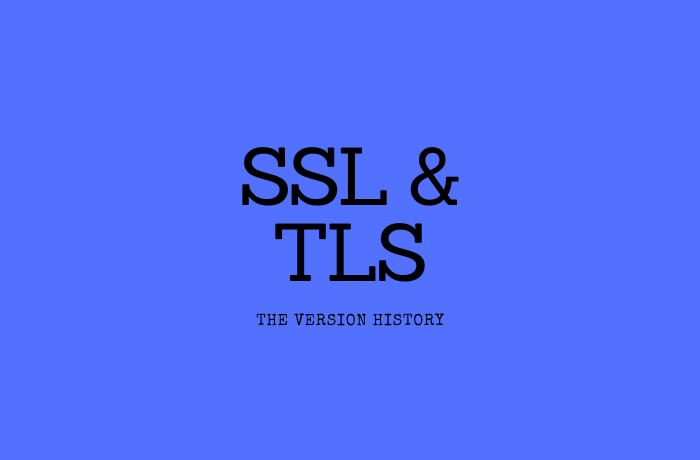SSL/TLS, the version history.

SSL (Secure Sockets Layer) and TLS (Transport Layer Security) are cryptographic protocols used to secure communications over the internet. SSL was first introduced in 1994 and TLS was introduced in 1999. Over time, both protocols have gone through several versions, each with different levels of security.
- SSL 1.0 and SSL 2.0: These were the first versions of SSL, but they had major security flaws and were quickly replaced.
- SSL 3.0: This version was introduced in 1996 and addressed many of the security flaws in SSL 2.0. However, it too had security vulnerabilities, including the POODLE attack, which led to its deprecation in 2015.
- TLS 1.0: This version was introduced in 1999 as a successor to SSL 3.0. It was designed to be more secure and included several improvements, such as better key exchange methods and support for more secure cipher suites.
- TLS 1.1: This version was introduced in 2006 and included several security enhancements, such as support for more secure cipher suites and better protection against certain attacks.
- TLS 1.2: This version was introduced in 2008 and is currently the most widely used version of TLS. It includes even more security enhancements, such as support for Perfect Forward Secrecy (PFS) and stronger cipher suites.
- TLS 1.3: This version was introduced in 2018 and includes several new security features, including faster handshake times, better protection against attacks, and improved cipher suite configurations.
In general, newer versions of TLS are more secure than older versions. It’s important to keep your SSL/TLS implementation up-to-date to ensure the highest level of security. It’s also worth noting that support for older versions of SSL/TLS is being phased out, so it’s important to migrate to newer versions to avoid compatibility issues.
